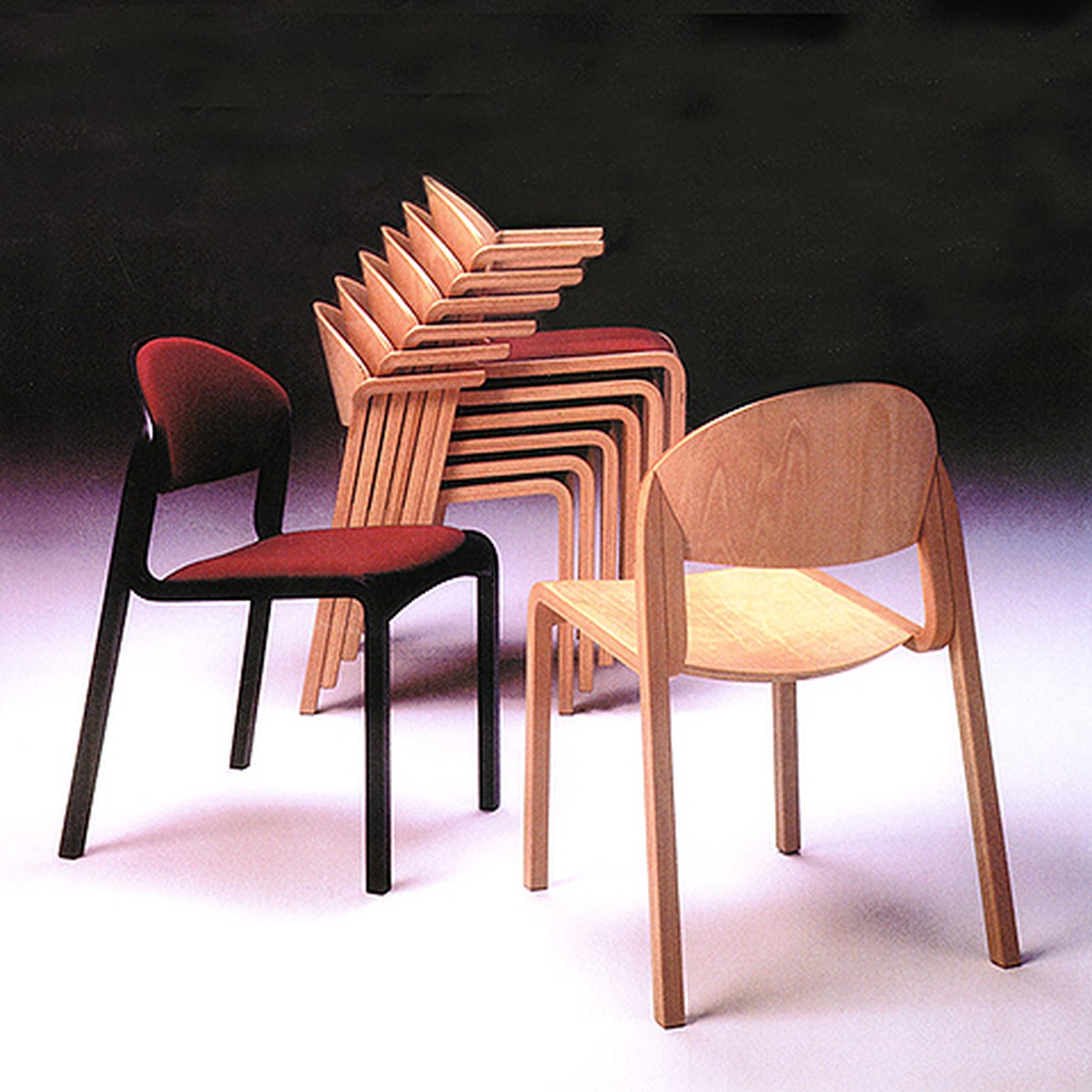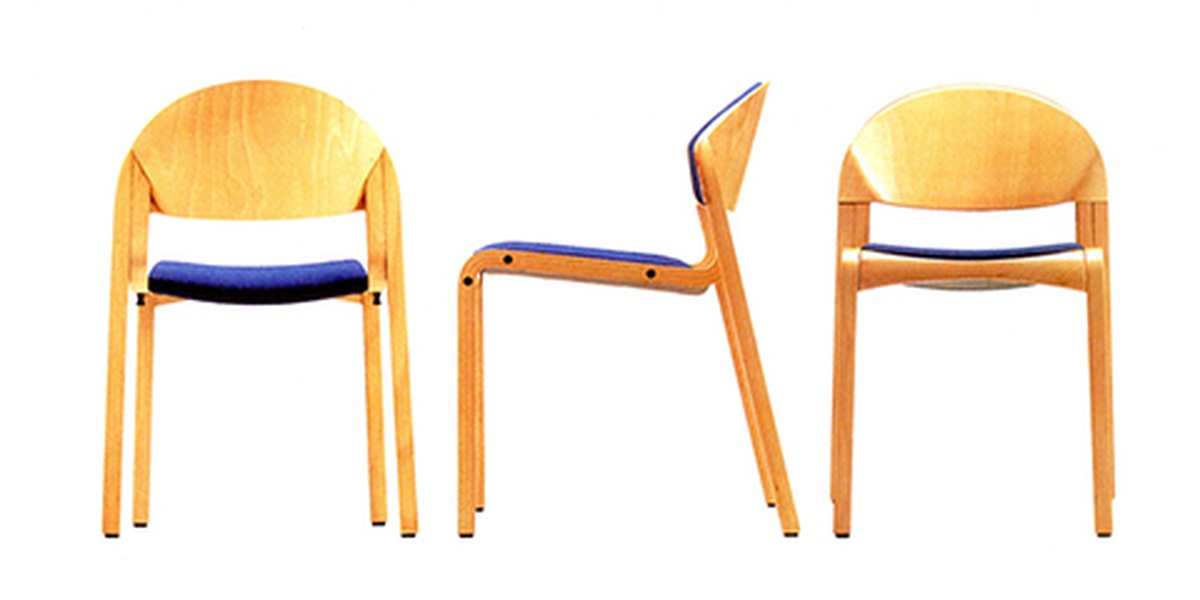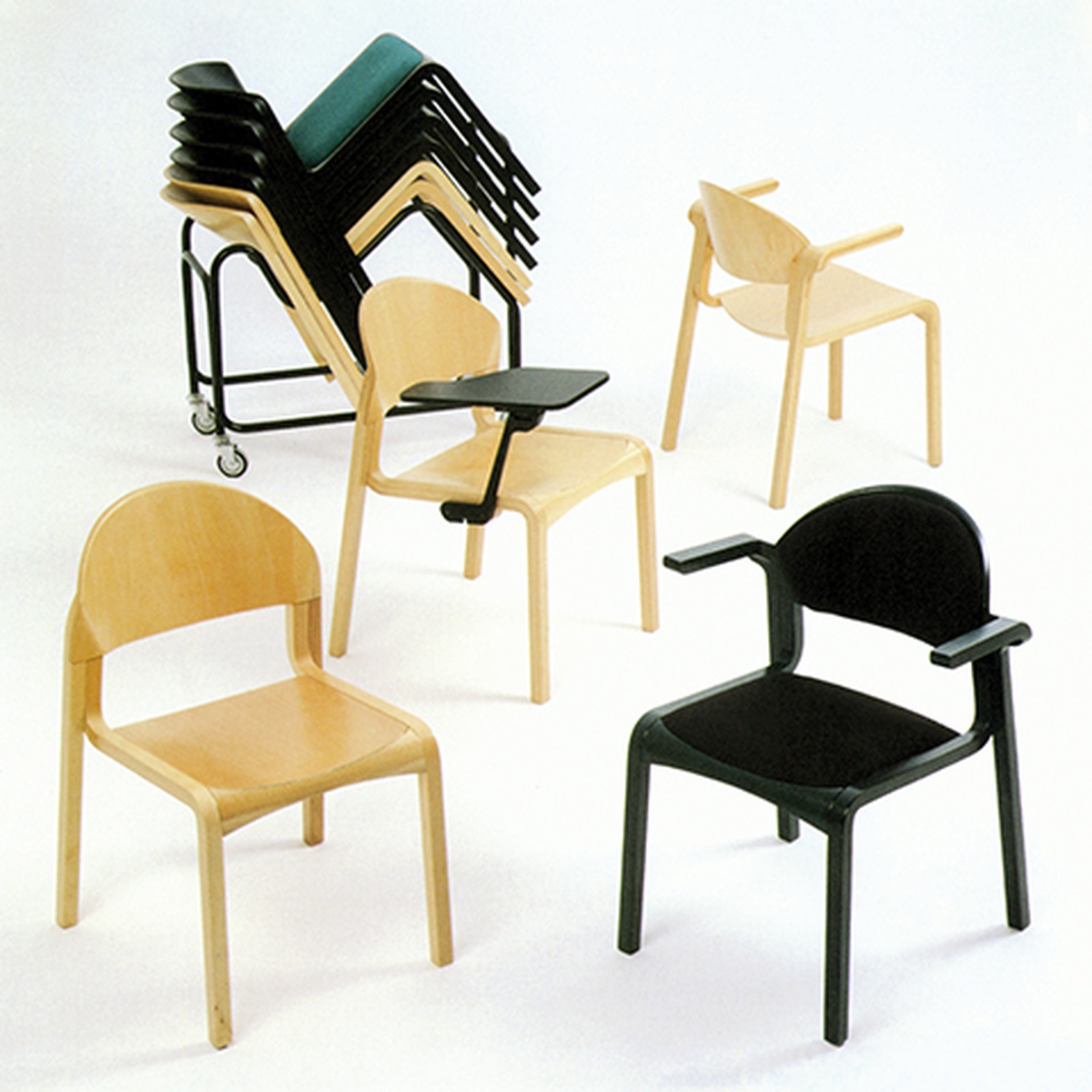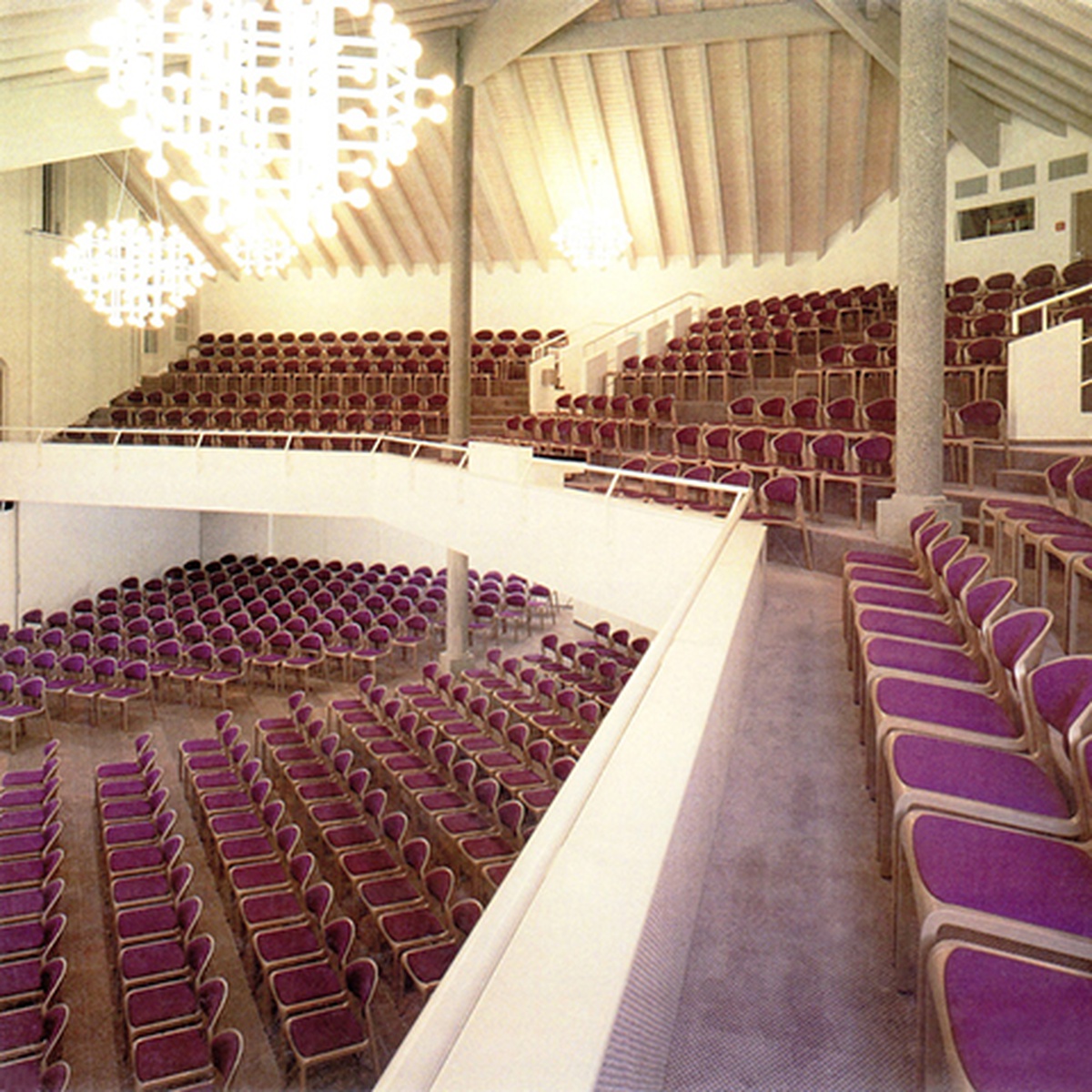Museo del Design del Friuli Venezia Giulia – Associazione di Promozione Sociale
P. IVA e CF 02863400301 – info@mudefri.it
The sudden closure of the New Pallavisini in 1982 imposes a severe strategic rethinking of the prototype presented by Pallavisini at the Salone Internazionale del Mobile in Milan that year. Excluding the possibility to propose the same project to other companies, Pasquinelli redesign the chair to be manufactured in wood by Adriano Olivo - great Italian master in laminated wood production. In fact Giulia contributes greatly to bring Olivo out of a difficult time, particularly thanks the popularity that the brand receives. Is so much published and appreciated in Europe, that Thonet (in 1987), Thonet Vienna (in 1988 as Julia) and Novikoff Inc. (in 1988 as Upton) – the Herman Miller’s brand - include it into their catalogs.

1985
Giulia
Manufactured by Olivo, distributed by various brands
Beech wood chair.

Giulia is a chair of great elegance and charm as well as incredibly comfortable. Not surprisingly it quickly wins some awards: in 1986, at the Salone Internazionale della Sedia in Udine and at Tecnhotel prize of Genoa - ADI Milan. In 1987 it is included in the exhibition The Quest for Continuity: Forms from Italy's Friuli, at CAFAM - Craft and Folk Art Museum in Los Angeles, as well as in three more exhibitions sponsored by ICSID - International Council of Societies of Industrial Design: Generations of designer / Two Generations of Designers held in Udine in 1998, Köln (D) and Chicago (USA) in 1999 in 1998 and 1999.

Giulia has been declined in several variants, with or without armrests; with upholstered seat and / or backrest; available in different finishes: natural wood, for appreciating the aesthetics of bentwood; lacquered wood that allows, along with the cushions fabric, a perfect customization. Here is an example of using Giulia for furnishing an auditorium.

Combinable, stackable, equipped with side table, Giulia lend itself to different uses.
Also in view of the undoubted popularity levied by the brand manufacturer, Giulia is an excellent example of a product "hinge", emblematic of "Skin change" occurred in the production cycle of some companies in the "Triangle of the chair" in the second half of the '80s.